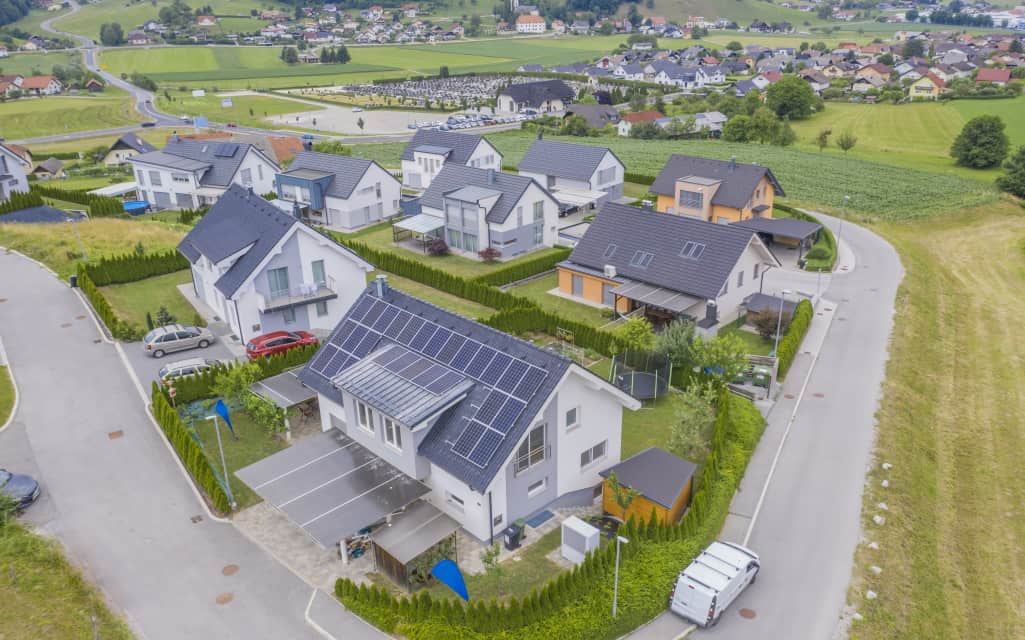Are you looking for a roof replacement that can help in the long run and is also good for the environment? You’ve come to the right place because a recycled rubber roof has got everything you are searching for. But, first, allow us to precisely tell you what a recycled rubber roof is.
A recycled rubber roof is made from rubber or plastic polymers or sometimes a blend of both. It contains up to 95% recycled materials. These recycled materials can also comprise rubber, plastic, and slate dust. A recycled rubber roof replicates cedar shakes or slate shingles.
You need not worry about the availability of diversity in designs and colors as there are various colors and designs that you can avail yourself instead of sticking to the same old boring gray color.
How much does a recycled rubber roof cost?
Well, a recycled rubber roof is more expensive than asphalt shingles but cheaper than slate, metal, or clay roofs.
A recycled rubber roof would cost approximately $400-$800 per square foot while for the same foot, asphalt shingles can cost about $100-$150. I know it’s cheap, right? But according to All Seasons Roofing in Santa Fe it would be wise to go with the expensive one as this option ensures a longer lifespan and a single-time investment. On the other hand, asphalt shingles would need a replacement repeatedly and make you spend every time you replace them.
Advantages Of Recycled Rubber Roofing
If you are still not sure whether you should go for a recycled rubber roof or not, let’s brief you on some of its outstanding benefits to give you a clear idea:
1. Longevity
While constantly keeping a check on them, asphalt shingles usually last for 15-20 years. However, a recycled rubber roof can remain intact for about 30-50 years. The cherry on top is that during this period, no maintenance is required to get the roof going.
If any leak or crack is observed due to incorrect installment then this is of no harm as it can be corrected by applying a latex sealant or replacing a few tiles (if needed) without the removal of the whole roof. This would not require a huge amount to be spent and the roof would be as good as new.
2. Eco-friendly
The reason behind so much hype for a recycled rubber roof is the nature of its raw materials which mainly include recycled tires, slate dust, and sawdust.
Also, rubber is a perfect insulator and thus prevents UV rays from absorbing and would result in the cutting down of energy costs. Therefore, along with being environmentally friendly, a recycled rubber roof would save the excessive consumption of electricity.
3. Extreme weather conditions
As mentioned earlier, rubber is an insulator and is not affected by either hot or cold weather. Consequently, a recycled rubber roof does not fade over time on direct exposure to sunlight. Hence, it does not crack or become brittle.
It can bear severe weather conditions compared to asphalt shingles. During hail or heavy winds, there is no harm to the roof.
4. Easy to install
A recycled rubber roof can be installed easily in comparison to asphalt shingles or slate roofs. However, to keep yourself on the safe side it is advised to hand over the installation process to a skilled roofer in your locality so as not to face any issue related to incorrect placement shortly. Therefore, you would not end up spending a heavy amount on repairs but instead on the amount required for its installation.
Can it be placed on an already present roof or not?
For the rubber roof to be installed, the previous roof has to be removed. But, if you do not plan on removing your old roof, it can be put on it and just a layer of foam would be needed in between them serving as insulation.
Recycled rubber shingles are extremely lightweight and are easily movable to locations making the delivery process simple.
5. Minimal maintenance
Most roofing materials come with the responsibility of keeping a check on them every once in a while or after the occurrence of a natural disaster.
However the owners of a recycled rubber roof are put to ease as they do not require such checkups.
You only need to check for leaks, cracks, or any sort of damage 3 to 4 times a year and this would be more than enough to get the roof going. In addition, during inspection of the rubber roof, clean it with water which would help elongate its durability.
What are some of its shortcomings?
Every object that we come across in our life has some flaws that when dealt with don’t lead to a major inconvenience. Similar is the case with a recycled rubber roof. Before you decide on spending a fortune on it, it is essential to be familiar with what exactly you will be dealing with in the future. You have seen its many benefits mentioned above and now let’s discuss some of its defects:
- Black spots can evolve on a recycled rubber roof and the solution for this would be cleaning your roof regularly.
- Rubber if you’ve noticed, has a pungent odor when it’s new. This would disappear with time but it can cause problems for people who are allergic or suffering from respiratory problems.
Conclusion:
If we go back in the past, Plastic was thought to be an indestructible material and considered of no use after discarding it. But, with the introduction of recycled rubber roofing, plastics and rubber are put to good use.
Besides, one of the major reasons behind the idea of a recycled rubber roof was the fact that all of the other roofing materials would somehow result in leakage and were permeable to water. However, a recycled rubber roof prevents any sort of leaks and thus keeps both the house and the roof protected from moisture absorption and damage.



